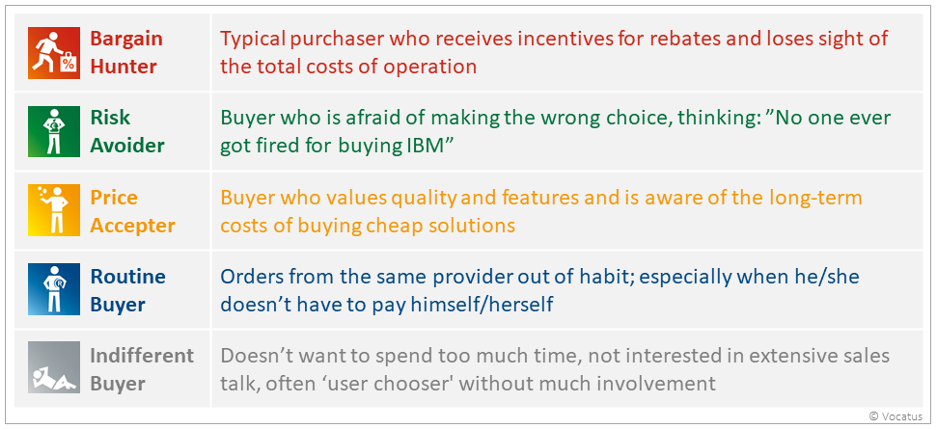Research in behavioral economics has helped marketers understand not how people make decisions but how they don’t make decisions—insights that can drive greater results with behavioral marketing. This is according to an article by Florian Bauer and Manuel Wätjen of Vocatus AG in The Behavioral Economics Guide 2021.
While the research findings provide interesting insights, they’re not much help in the real world when we’re trying to market to B2B buyers. In fact, they to skepticism that behavioral economics can help us at all.
Behavioral economics can help, but we need to move from academic research to the practical world of content marketing and sales enablement.
Purchase decision-making research has discovered more and more effects on B2B buying decisions. And “the more effects we find, the more difficult it is to apply them, because the more likely it is that effects contradict each other,” the article says.
Does that mean we should throw up our hands and admit defeat when it comes to behavioral marketing? Not at all.
Behavioral economics tells us that we never have complete information to make decisions. Instead, we use “unconscious rules of thumb,” based on rules that have gotten us by in past situations. We can move behavioral economics from academic research to the real world by understanding how people use these rules of thumb in specific situations—because decision-making processes change depending on the situation.
Coming to GRIPS with Behavioral Marketing
Bauer and Wätjen developed the GRIPS typology in 2018 to categorize buyers by their situation-specific decision-making processes. These types have been used in marketing and selling with real results.
Here are just a few examples they cite:
- An energy industry mailing reduced churn rate by 31%
- A print media call center increased conversion rates 148%
- A telecommunications call center increased conversion rates by 35%
Bauer and Wätjen identify five main GRIPS types. This video provides an excellent introduction to the five types. Here are some loose definitions for each:
- Bargain Hunter: Focuses on price and getting a good deal
- Risk Avoider: Fears making the wrong decision
- Price Accepter: Willing to pay more for perceived value
- Routine Buyer: Goes with the current vendor or product because it’s easy
- Indifferent Buyer: Takes advantage of a purchase situation on the spot
This chart gives examples of how each of these types might approach making a B2B purchase decision:

The key to applying GRIPS to behavioral marketing and sales enablement is understanding which decision-making strategies our buyers are using in which situations. Then we can shape the context in marketing, pricing and sales to influence the likelihood that they’ll employ particular methods.
5 Practical Tips for Content Marketers
Here are my recommendations for using these insights about B2B buyer decision-making to improve your content marketing results.
Know Your Industry. If you sell products or services that have a long selling cycle and a high price tag—e.g., millions of dollars—your buyers are more likely to be Risk Avoiders or Price Accepters. By understanding your industry, you can already begin to understand how your buyers come to a purchase decision.
Get First-Hand Information. Go directly to your personas to see if decision-making commonalities arise. Use online or email-delivered surveys, focus groups, interviews and other market research. Have your lead development representatives, call center staff and inside sales team start asking key questions to understand how your buyers buy. Then craft your messaging to match those buyer types.
Talk to Buyer-Facing Experts. Talk to your salespeople, solution engineers—anyone who deals directly with buyers during the sales process. They have experience with the messages that appeal to your buyers. Use those insights to develop content that incorporates the messaging that works, using awareness of the GRIPS types that they represent.
Use Data. Any data you collect about the buying process can help you analyze what works. How long is your sales cycle? What’s the average deal size? Who is involved in the buying process? Why did you lose a deal? What factors tipped the scales to your brand?
Shift the Situation Context. Your messaging can help influence buyer perceptions and shift the situation context. Maybe you have Bargain Hunters who have never considered the negative consequences of going with the cheapest solution. Or maybe you can persuade your Routine Buyers that you offer much more than the vendors with whom they have been working. Your behavioral marketing messaging can help give them the additional information they need to shift their perception.
Learn more about behavioral economics and how to apply it to your content marketing in “Why Your B2B Strategy Should Use Behavioral Economics Principles.”

Brenda Caine is a senior content strategist at Content4Demand. She works with B2B clients on content marketing strategy, personas, messaging and ideation; content audits, gap analysis and content mapping; blogs; content development and more. Brenda has a black belt in karate, and when she’s not immersed in technology, you can find her dancing in the ballet studio, lifting weights at the gym or strolling down the avenue in a 1930s dress with a smart hat to match.



